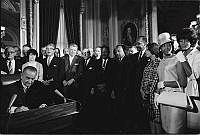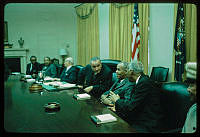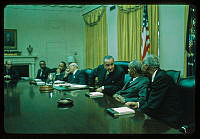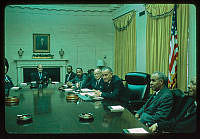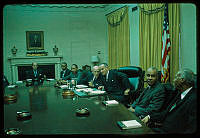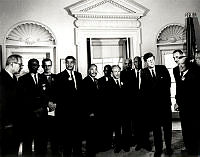President Lyndon B. Johnson with Civil Rights Leaders in the Oval Office
In this photograph, taken in the Oval Office on January 18, 1964 by Yoichi R. Okamoto, President Lyndon B. Johnson meets with a group of civil rights leaders. Among the group are the Rev. Dr. Martin Luther King, Jr. of the Southern Christian Leadership Conference (left), Whitney M. Young, Jr. of the National Urban League (right), and James Farmer of the Congress of Racial Equality (far right).



